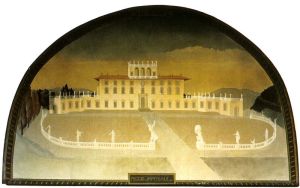Is Every Performance "Site Specific"?
Chloe Veltman recently posted an interesting commentary on the notion of “site specific theatre” with reference to the recent production of Dido and Aeneas by San Francisco’s Urban Opera (“Not All Site Specific Theatre is Created Equal”). She proposed that “in order for a theatrical production to be site specific, it needs to be conceived specifically for the space in which it is produced,” and therefore “space becomes a performer, with the potential to change the entire relationship between text, visuals, sounds and the human body in fascinating ways.”
In the context of her article I personally like her narrow definition, but it got me thinking that since any work of performance art exists only in the moment of performance, each performance is in some sense a new work, created freshly in a new “site” and therefore “site specific” for that performance.
Of course what Chloe was refering to with her definition was “environmental theatre” troupes like Reial Companyia de Teatre de Catalunya or Walkabout, and indeed it’s difficult to imagine such productions mounted outside their original “sites”. However, in the case of canonical “works” like Hamlet or Dido that she mentions in her article, I question the privileging of the original performance circumstances, in spite of the fact that I spend my life mounting “historically informed” performances.
I think “around” this issue all the time, as most of the music that Magnificat performs was “site specific” when it was composed and, in fact, there was never a thought at the time that it might be performed again, much less in another site. So every concert involves a reinvention, shaped to some degree by the environment – not only the venue of course, but the specific performers, the time of day, the audience, etc.

Villa Poggio Imperiale in the 17th Century
For example, Magnificat is now preparing for a production of Francesca Caccini’s La Liberatione di Ruggiero, a musical setting of a libretto by Saricinelli written to celebrate the visit of the Crown Prince of Poland to Florence for Carnival in 1625. The work (called a balletto by Saricenelli and Caccini, usually called an opera these days) served as an extended prologue to a “ballet” involving the “audience” of courtiers, which in turn was followed by a horse ballet. (No horses is Magnificat’s production – but we will have puppets!)
The performance of La Liberazione took place in the recently renovated Poggio Imperiale outside Florence in a room with frescoes depicting heroic scenes of women from Scripture and Classical literature. The frescoes complimented the political motivations of the libretto: to reassure the Florentine nobility about the co-regency of the Grand Duchess Maria Magdalena and her mother-in-law Christine of Lorraine. Saricinelli’s retelling of the story of Ruggiero’s liberation from the island of the sorceress Alcina, emphasizes the agency of strong women, both bad – Alcina – and good – Melissa, and even involves the cross-gendering of the latter (she appears as the male sorcerer Atlante at the cucial point of Ruggiero’s “liberation”). The equine ballet took place in the massive courtyard of the palace, so the audience moved outside. All very “site specific”.
So is a performance anywhere other than the Poggio Imperiale with it’s thematically-related frescoes a valid performance? Is it even appropriate to revive music that was composed so consciously for a specific occasion and environment? Of course, I think it is, and I would maintain that the performance in 2009 is just as “site specific” as the one that took place in 1625.
In the introduction to his comprehensive work on Site Specific Art, Nick Kaye notes that
“the location, in reading, of an image, object, or event, its positioning in relation to political, aesthetic, geographical, institutional, or other discourses, all inform what “it” can be said to be.”
Location, whether the original venue of an historical work or the present environment of tonight’s concert, is connected intrinsically to the ephemeral reality of the work realized in performance. Performance is always a re-invention, a birthing – in important ways, every performance is a premiere and a final show in one, since outside of the moment of performance the “work” is only a concept.